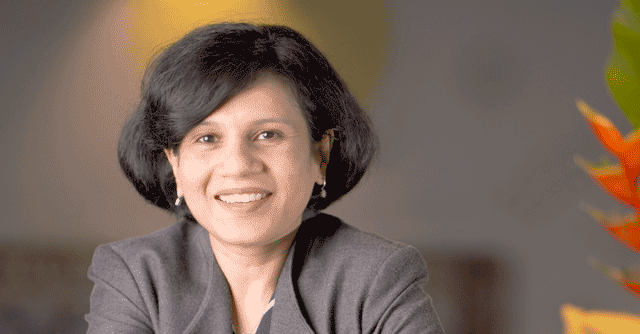
‘Any new innovation that people think about is always on the cloud’


Microsoft has reported cloud revenue at $23.4 billion for the March quarter, up 32% year-on-year. A large part of it is due to the rapid digital transformation in countries such as India. Irina Ghose, who has been elevated as Microsoft India’s chief operating officer (COO), shared her views in her first interview as COO, on how enterprises in India are moving from cloud adoption to innovation and the company’s increasing focus on mixed reality, automation and more. Edited excerpts:
After two years of rapid growth, is India still on the cloud adoption journey? What is the industry looking at now?
The question of whether or not (to use) cloud is no longer there. There could be certain industries, which might take the decision to move to cloud a little later, because of certain needs. Or certain parts of that industry, based on the requirement, may might take a hybrid approach. But not going for cloud is definitely not something people are talking about. Any net new innovation that people are thinking about is (on) the cloud, or an edge-and-cloud kind of a thing.

The last 2-5 years were about getting people onto the cloud. How is Microsoft moving beyond adoption of cloud?
There are a few mega trends that we are seeing. The first step for most organizations has been moving a big chunk of their first infrastructure workload. The second is the signals, and how they are connecting the signals coming from either different applications or consumers whom they are serving—like what’s happening when you’re combining the power of customers bringing signals via say super apps, or ensuring that the data on the back-end is telling you a story. That’s something that we’re seeing in a big way.
The next part is automation on the cloud, which is also happening in an intimate manner, in terms of taking away a lot of the manual processes which were earlier in vogue.

People are also extending applications. For instance, if you had an application that was doing a customer relationship management or anything else to serve customers, you have a new generation of gig workers who are coming by, and how do you ensure that you’re extending applications to that class of players. That’s another mega trend.
The third is security. Right from end-point to what you do in an application, confidential computing. The last one is the entire realm of mixed reality. There’s work that we’re doing with Apollo Hospitals in terms of how they’re thinking about doing proactive healthcare management of customers, along with HoloLens. Customers are curious, even in banking, retail and education. So, innovation on top of cloud for use-cases and some of these mega trends are what we’re thinking about.
How are companies looking to explore, if not implement, virtual reality or metaverse technologies?

There’s a lot that’s happening for everybody. There are use-cases that they’re exploring, if that can be done using mixed reality kind of scenarios. We’ve got a few scenarios in healthcare, like Apollo, where you’re thinking about remote ways of looking at patients, or proactive healthcare management.
Or when you are thinking about onboarding new employees, which can be a big scenario. Remote assist for factory production, in retail for driving immersive customer experiences or giving them an end-to-end view about what can be available in the stores, those are some of the perspectives. Across all industries there’s a lot of curiosity.
Satya Nadella said that security is a $15-billion business for Microsoft. How big is it in India?

It’s one of the fastest (growing). In all my interactions with customers it’s either the number one or number two. The good part is it became a boardroom conversation, and isn’t a one person or chief security officer conversation anymore.
How does security fit when we’re marrying legacy technologies with new ones?
When you’re thinking about the entire app landscape and the infra that you’re building, you have to think about security layers. It’s not just legacy technology which is there, but you’re getting five new independent software vendor (ISV) applications also. When you’re bringing those layers in, how are you ensuring that the wrapper of the corporate security is built across the entire environment, so that before users are able to access anything — the device from which they’re accessing — is taken care of in the most efficient manner.

We encourage our customers to do a lot of assessments beforehand to just understand the lay of the land. To understand what are the vulnerabilities that we see, what needs to be done to ensure that the health of what they do is taken across in a gradual manner.
The second side is skilling on security. Skilling from an end user and from a corporate standpoint is critical.
How are upcoming regulations affecting the decisions that you’re making today?

What we do is ensure that whatever are the standards of compliance, and needs of ensuring privacy, security, compliance and identity, we adhere to that. Privacy, governance and security, whether you talk about the Data Protection Bill that the government is going to come up with, those are the cornerstones. So we will ensure that whatever we’re thinking in our product strategy is adhering to the needs in a very systematic manner.
